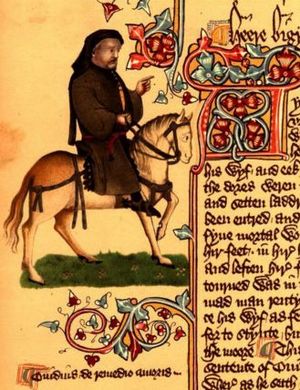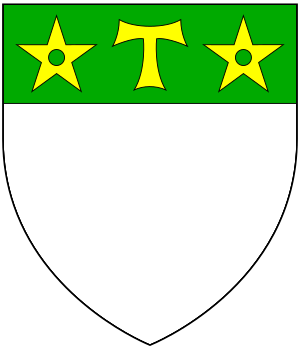Robert Drury (speaker) facts for kids
Quick facts for kids
Sir Robert Drury
|
|
|---|---|

Chest tomb with effigy of Sir Robert Drury; St Mary's Church, Bury St Edmunds
|
|
| Born | 1456 Hawstead, Suffolk
|
| Died | 2 March 1536 |
| Spouse(s) |
|
| Children | Sir William Drury Sir Robert Drury Anne Drury Elizabeth Drury Bridget Drury Ursula Drury |
| Parent(s) | Roger Drury, Felice Denston |
Sir Robert Drury (born 1456, died 1536) was an important English knight and politician. He was a trusted advisor to two kings, King Henry VII and King Henry VIII. He also served as the Speaker of the House of Commons, which is a very important job in the English government.
Sir Robert Drury owned a large estate in Hawstead, Suffolk, and his London home was located where the famous Drury Lane is today.
Contents
Who Was Sir Robert Drury's Family?
Robert Drury was born in Hawstead, Suffolk, sometime before 1456. He was the oldest of four sons. His father was Roger Drury, and his mother was Felice Denston. His family was well-known and respected in Suffolk.
What Did Sir Robert Drury Do in His Career?
Sir Robert Drury started a long and important connection between his family and the Tudor kings. Many of his family members became important figures in English history during the 1500s.
Becoming a Lawyer and Politician
In 1473, Robert Drury joined Lincoln's Inn, which was a place where people trained to become lawyers. He became a very skilled lawyer. He was involved in many important legal tasks in Suffolk starting from 1486.
He was elected as a Knight of the Shire (which means he was a Member of Parliament, or MP) for Suffolk in 1491, 1495, and 1510. In 1495, he was chosen to be the Speaker of the House of Commons. This role meant he was in charge of leading discussions and keeping order in Parliament.
Serving the Kings

King Henry VII made Robert Drury a knight in 1497, after a battle called Blackheath. Sir Robert was also present at important royal events, like the funeral of young Prince Henry in 1511.
He helped manage the will of a very important nobleman, John de Vere, 13th Earl of Oxford, who passed away in 1513.
Sir Robert also worked to keep peace between England and Scotland. He was part of a group that tried to solve problems on the Scottish border between 1510 and 1513. In 1509, he witnessed the signing of a peace treaty between the two countries.
In 1520, Sir Robert Drury traveled to France with other knights to attend a famous meeting. This meeting was between King Henry VIII and Francis I of France, and it was known as the Field of the Cloth of Gold. It was a very grand and important event.
What is Sir Robert Drury's Legacy?
Sir Robert Drury left behind a lasting impact, including his London home that gave its name to a famous street.
His Books and Family Records
Two beautiful books that once belonged to Sir Robert Drury are still around today. One is a Latin Bible from the 1200s, which is now at Christ's College, Cambridge. Sir Robert used some blank pages in this book to write down the marriages and children of his family, keeping a record of his family's growth until 1566.
The other book is one of the most famous copies of Chaucer's The Canterbury Tales, called the Ellesmere manuscript. On one of its first pages, it says "Robertus Drury, miles" (Robert Drury, knight), and lists his children.
His Burial Place and Home
Sir Robert Drury passed away on March 2, 1536. He asked to be buried next to his first wife, Anne Calthorpe, in St. Mary's Church, Bury St. Edmunds. Their tomb is still there today.
The large house that Sir Robert Drury built in London eventually gave its name to Drury Lane. This street is now famous for the Drury Lane Theatre, a well-known theater.
Sir Robert Drury's Marriages and Children
Sir Robert Drury married twice and had several children with his first wife.
First Marriage
His first wife was Anne Calthorpe, daughter of Sir William Calthorpe. They were married by 1494. Together, they had two sons and four daughters:
- Sir William Drury (around 1500–1558) of Hawstead. He married twice and had children with his second wife, Elizabeth Sothill.
- Sir Robert Drury.
- Anne Drury, who married Sir George Waldegrave and later Sir Thomas Jermyn. Many important families today are descended from her.
- Elizabeth Drury, who married Sir Philip Boteler in 1510.
- Bridget Drury (died 1518), who married Sir John Jerningham. They had three sons and two daughters.
- Ursula Drury, who married Sir Giles Alington.
Second Marriage
After Anne Calthorpe passed away, Sir Robert Drury married Anne Jerningham. She was the daughter of Sir Edward Jerningham. Anne had been married before to Lord Edward Grey and Henry Barley. Sir Robert's will refers to her as 'my Lady Grey'. They did not have any children together. After Sir Robert's death, Anne married Sir Edmund Walsingham.
Images for kids





